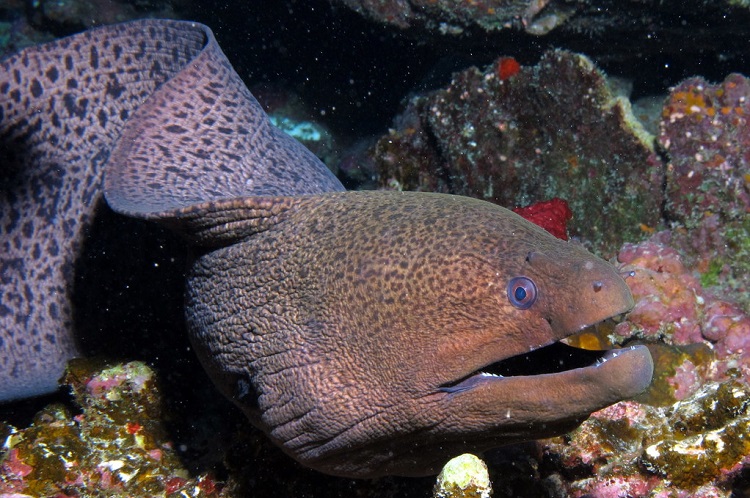The story of the eel is a slippery subject that takes us from the Sargasso Sea on the eastern coast of the US all the way to the rivers and lakes of Europe.
As we follow the intriguing life story of the freshwater eel, we’ll unlock a series of secrets and mysteries, like why the electric eel isn’t really an eel at all and why American and European eels have long flummoxed marine biologists with their bizarre anatomy and shape-shifting ways.
How Much Do You R-eely Know about Eels?
I thought I knew quite a bit about eels until I watched an intriguing documentary showing me how wrong I was in spectacular technicolor. Yes, I thought that little eels would grow up with their parents much like I did. Just how wrong can one person be?
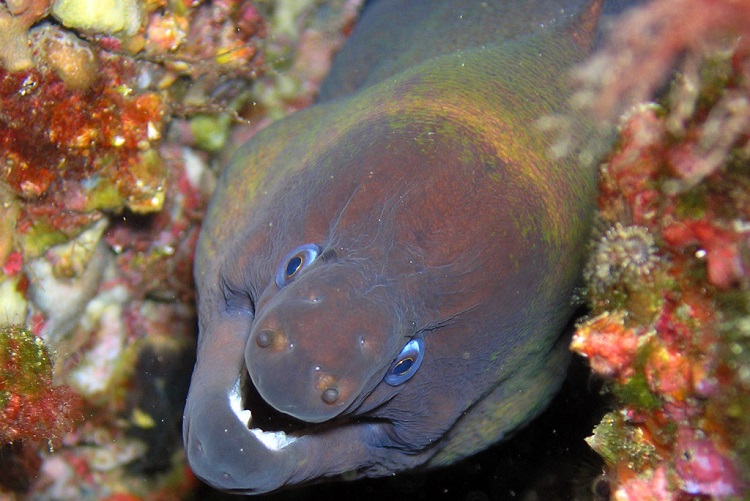
I also thought that electric eels were like the ones you see in the Mississippi River, but that’s not the case. Electric eels aren’t eels at all – they’re knifefish, more closely related to carp than freshwater eels (Anguilla rostrata).
Even Moray eels are a bit of an enigma, as these eels mate rather than spawn, but they are still considered true eels, and we’ll find out why a bit later on.
Etymology
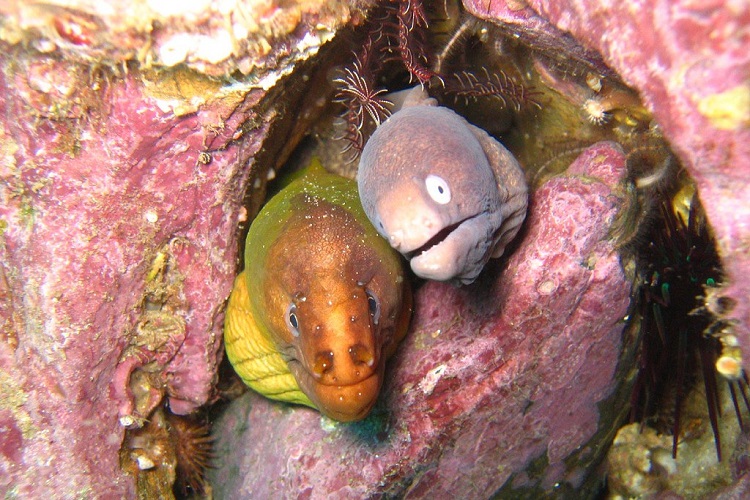
There seems to be no meaning behind the name ‘eel.’ It just appeared one day; subsequently, German, Dutch, and English speakers all used the same word to refer to long slimy fish.
We would have been better off calling them water worms like the Ancient Greeks, but we decided to stick with eel.
Even the scientific name, Anguilliform, simply means shaped like an eel, so it offers no further enlightenment. I told you it was a slippery subject!
A Detailed Description of the True Eels
Given below is a complete physical description of eels.
What Do True Eels Look Like?
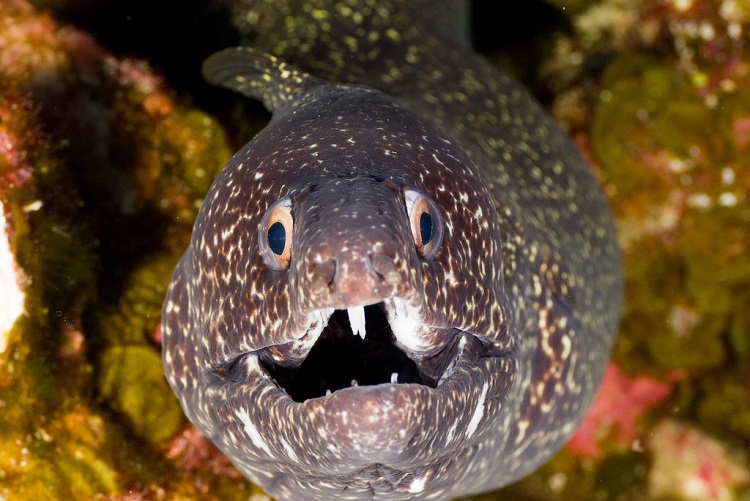
You can recognize an eel by its distinctive, wormlike body. Although they are a type of fish, they look more like worms or snakes.
At first glance, you don’t realize that eels have fins at all, and that’s because the main ones are fused, forming a single fin that runs along the eel’s back and around its tail.
Most eel species lack pectoral fins, except for the freshwater eels, which have small, rounded fins just behind their gills.
While all eels have scales, they’re not usually visible and are so deeply embedded in their skin that they feel smooth and slippery.
Eels vary widely in terms of both size and coloration. Some deep-sea species are almost black, while some tropical reef species appear yellow or even green.
Freshwater eels, including American eels, change color and shape as they mature and go through different phases (much like teenagers), appearing translucent, yellow, and eventually tarnished silver.
The (Super) Natural History of the Eel
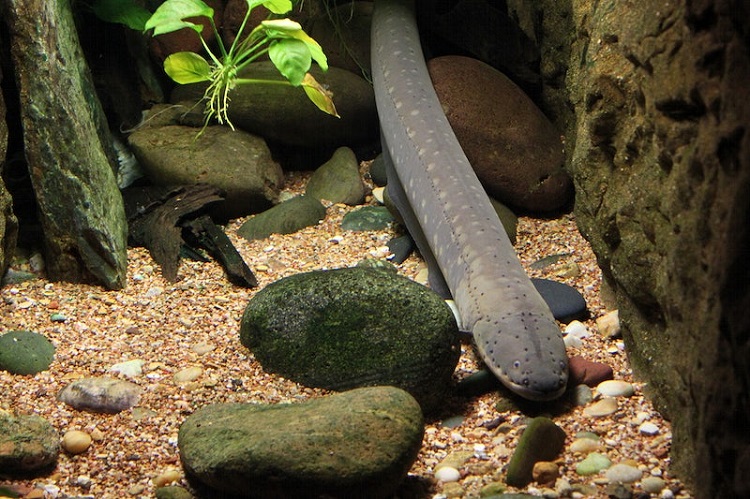
Eels have a long and colorful history that began some 100 million years ago. They are the oldest living members of the Anguilliformes order.
Freshwater eels live a catadromous existence, traveling from the ocean to inland freshwater habitats, where they spend a large part of their lives before returning to the sea to spawn.
Not all eels are as adaptable, and most Moray eels live their entire lives in the sea, rarely straying into fresh water.
For many years, scientists were mystified by the eel. They found no evidence of young eels in the ocean, and struggled to find eel sex organs, leading them to believe that eels emerged from the mud or were “born of sea foam.”
If you keep reading, I’ll tell you the truth about how eels reproduce, but for now, let’s stick with their natural history and evolution.
The Timeline of Genera and Eel Evolution
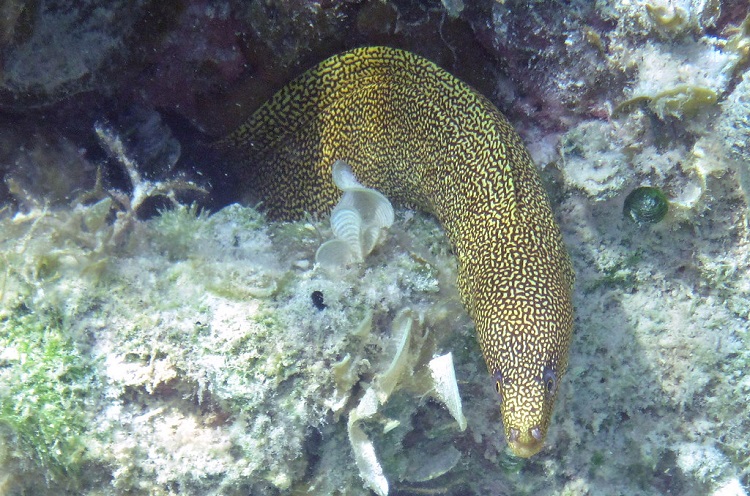
The eel-volution is yet another aspect of these curious fish that has kept scientists and eel researchers guessing.
There are two distinct species of freshwater eels – the American and European – but both these species return to the same spawning area and can even breed together, so how did the two species separate in the first place?
Well, Panama arose and got in the way. About 3.5 million years ago, tectonic movements caused volcanic islands to form, separating the oceans and forming what we now know as the Atlantic Ocean and the Pacific Ocean.
This development strengthened the Gulf Stream, sending eel larvae to Europe, where they began a whole new population that subsequently became the European eels.
The Life Cycle of True Eels
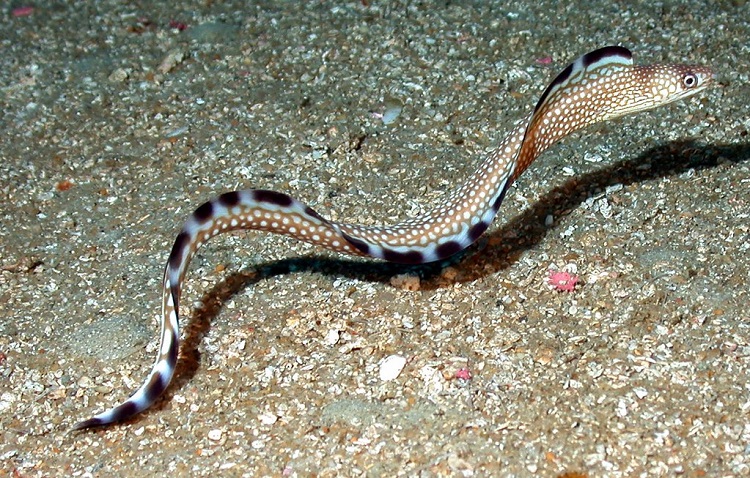
All eels share a similar life cycle, but it’s the freshwater eels that are r-eely interesting!
It’s tough being born an eel. When you hatch out of your egg, you’re just a transparent willow leaflike larvae, all 5mm long. You’re too small to swim against the current, so you drift along, going wherever the Gulf stream takes you.
For some leptocephali or eel larvae, that journey only ends 6,500 km away from their spawning ground in the Sargasso Sea.
It takes the larvae between one and three years to reach the coastal waters they need to enter the next phase of their life, and it’s here that they metamorphose into glass eels.
Upon entering a freshwater habitat, the glass eel starts to pigment and turns into an elver that travels upstream, searching for their juvenile and adult habitats in which to grow.
They then turn into yellow eels and remain in this form for up to 20 years, growing and building up the fat stores they need to survive their final stage of life.
The transformation into silver eels is one of the strangest. Not only does the eel change color, but its eyes grow, its digestive tract shuts down, and its pectoral fins widen.
The eel is now ready to make the long journey back to its birthplace in the spawning grounds of the Sargasso Sea (eels final location), where the entire cycle begins over again.
How the Eel’s Diet Develops during Its Life
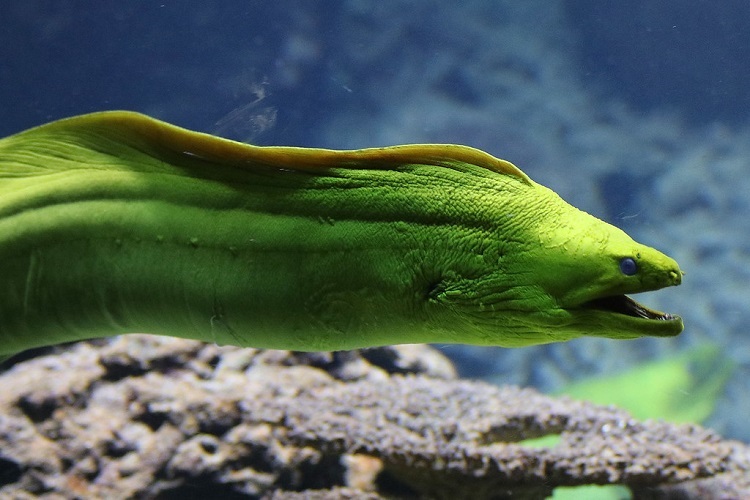
As larvae, eels eat whatever is small enough to fit into their minuscule mouths, utilizing the detritus, or particulate organic material (POM), more commonly known as marine snow.
When they become glass eels, they trade their baby food for something a little more substantial, in the form of small crustaceans and aquatic insects.
Yellow eels are predatory creatures that hunt small fish, invertebrates, frogs, and worms. Some will even take birds and small mammals, while others resort to cannibalism, which is more common in marine species.
As silver eels, they continue to be opportunistic feeders until they reach puberty, when they stop eating altogether. And you thought adolescence was tough!
Saltwater eels, like the 200 or so species of Moray, are nocturnal hunters that use ambush techniques to capture and consume everything from squid and clams to crabs.
The Scientific Classification of Eels
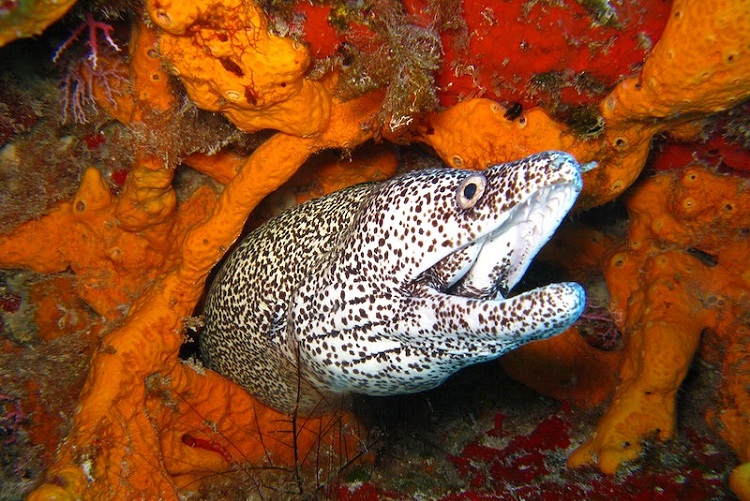
I always thought eels were just slithery creatures designed to give me nightmares, but scientists seem to think it’s a bit more complicated than that. Eels are a type of ray-finned fish belonging to the Actinopterygii class alongside other species like the Angler and Puffer fish.
The Actinopterygii class is huge, containing some 24,000 different species, so scientists divided it into 42 orders, of which eels belong to the Anguilliformes. There are 800 different species in this order, which includes all marine and freshwater eels.
Suborders and Families
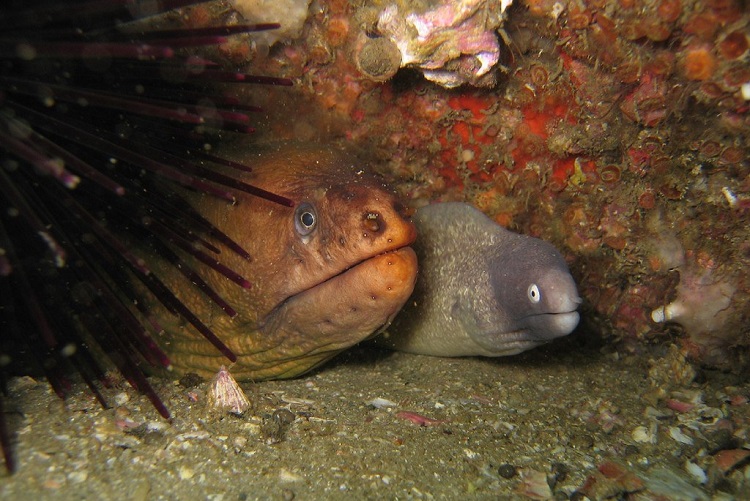
Eels are so complex and diverse that they have four different suborders, each containing several different families. Freshwater eels belong to the suborder Anguilloidei and the family Anguillidae, which makes them distinct from the weird and wonderful Snipe eels that make up the family Nemichthyoidei.
The deeper you dig, the more species of eel you find, and the more confusing it becomes. Cutthroat eels aren’t quite as terrifying as they sound but have their family, Synaphobranchidae, even though they look a lot like the family Anguillidae.
The Congroidei suborder is considerably more diverse, containing Snake and Worm eels and aggressive and predatory Conger eels.
Phylogeny
All species of freshwater eels descended from the same common ancestor, which makes them phylogenetic.
Scientists used whole mitochondrial genome sequences to establish the connection between the American, European, and Japanese eels. They found that all three descended from the African longfin eel or Anguilla mossambica.
The Distribution and Habitat of Eels
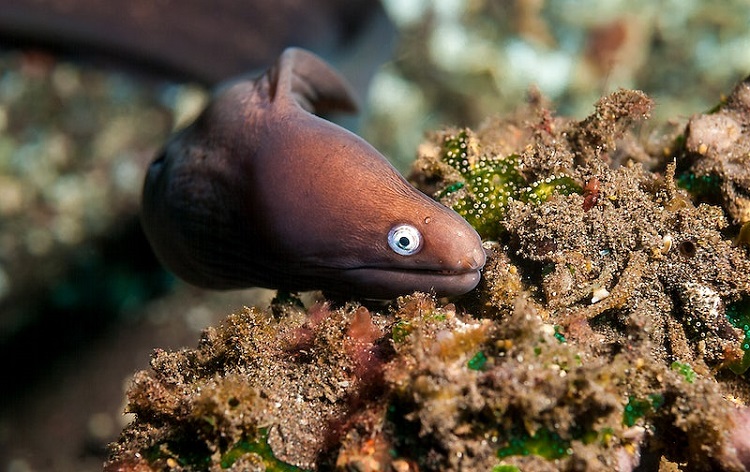
If you’re standing near the water, the chances are there’s an eel not too far away. Eels live in all the world’s oceans, with some utilizing coastal habitats and others, like the Pitch-black Gulper eel surviving in deep waters up to 7km below the surface.
Other marine species prefer the warmer, shallower waters of tropical and temperate coral reefs, although a few are willing to chance life in the frigid waters around the Earth’s poles.
Eels aren’t restricted to marine environments either, and freshwater species spend most of their lives in wetlands, lakes, and rivers. They even appear above ground from time to time as they slither from one freshwater habitat to the next.
You can even find eels living an underground existence. The American eel hibernates over winter, burying itself in deep mud until the temperature rises in spring.
How Big Can an Eel Get?
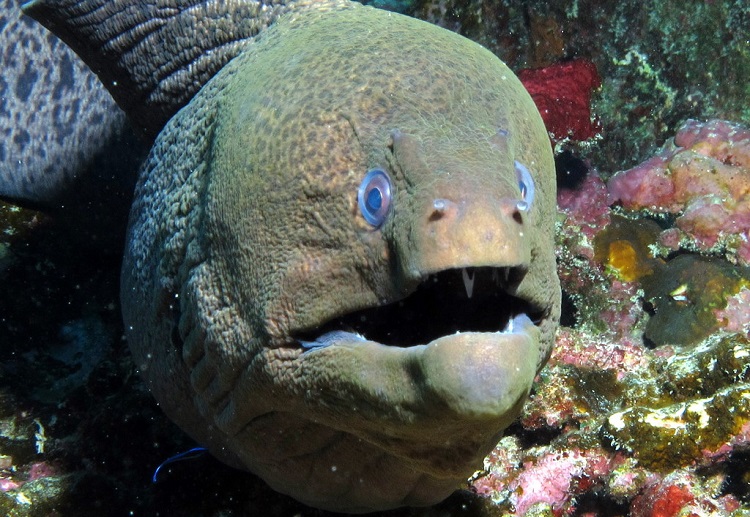
Given that most eels start life as 5mm long larvae, they have a lot of growing to do, and some take that challenge very seriously! My husband loves telling the story of how he and a friend caught a long-finned eel in Australia and ended up fighting with five feet of slime and muscle!
That’s not even particularly big compared to European congers, which can reach up to seven feet in length. Even that can’t compare to the giant Moray, which keeps growing until it’s nearly 10 feet long!
The Eel’s Reproduction and Life Span
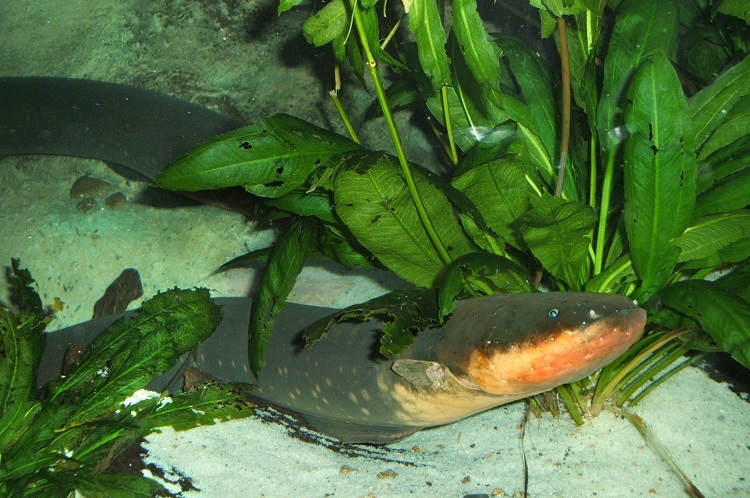
American and European eels travel thousands of miles to spawn in the Sargasso Sea, but no one’s ever caught them in the act, so we don’t know exactly what happens.
It seems likely that the females release their eggs into the water, where they’re fertilized by the mature male eel sperm.
Like these other freshwater species, the Japanese eels only reach puberty in the final stage of their life, developing eel genitals shortly before they return to spawn. They can be up to 30 years old when this occurs, and mature eels die shortly after.
Eels have so much to do and so far to travel that they have to live for a fairly long time to fit everything in, and they have much longer life expectancies than most fish, often living well into their eighties!
Four Seriously Strange Facts about Eels
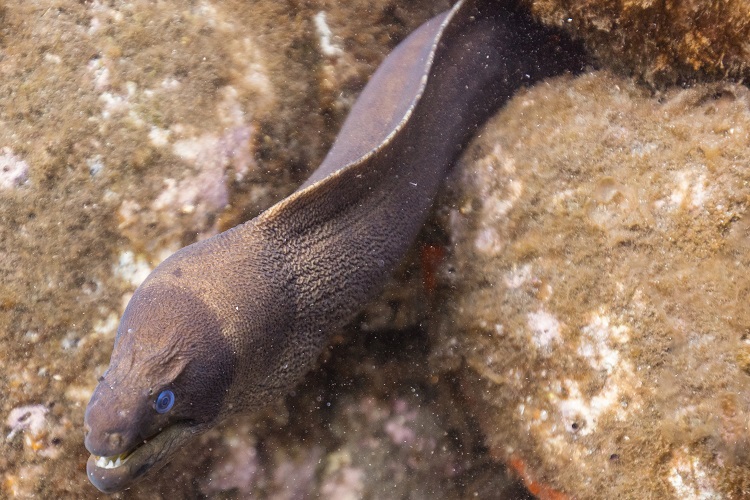
1. Eels Can Climb Walls and Waterfall
While in their glass eel or elver stage, eels can climb vertical walls and scale waterfalls, but once they reach about five inches long, they lose the ability altogether.
2. Glass Eels Navigate Using Magnetic Fields
To find their way to and from the eels spawning area in the Sargasso Sea, young European eels use a magnetic sixth sense that enables them to detect subtle differences in the Earth’s magnetic field.
3. Eels Are Covered with Slimy Mucus
When my husband caught his eel in Australia, little did he know that he’d spend the next three days trying to remove the slime from his hands! This slime helps shield the eel against parasites and forms a protective layer over any open wounds.
4. the Oldest Eel Lived for over 150 Years
A European eel dropped into a Swedish well in 1859 died in 2014, spawning many terrible jokes on Twitter as it did so!
Eel Population
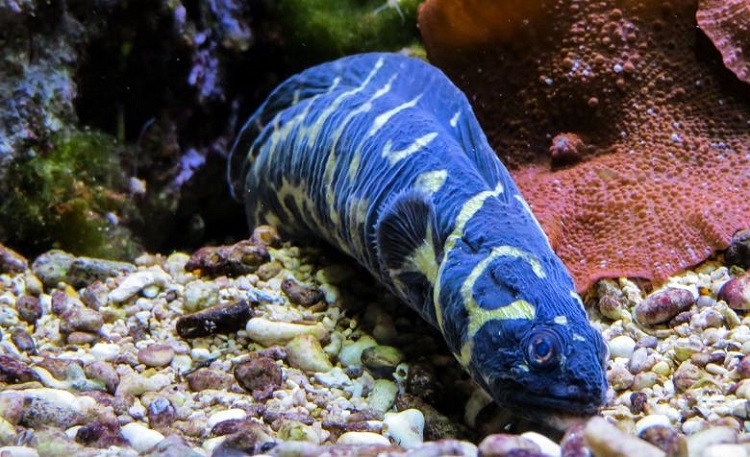
It’s tough to pinpoint any precise statistics regarding the worldwide eel population, partly because they go through so many different forms during their lives and live in such diverse habitats.
The one thing we do know is that the populations of the three commercially valuable species are all declining at an alarming rate.
A few years ago, the World Wildlife Fund for Nature found that migratory freshwater eel numbers dropped precipitously in Europe by over 90% since the eighties, largely due to overfishing, pollution, hydropower, and climate change.
The Cultural Significance of the Eel
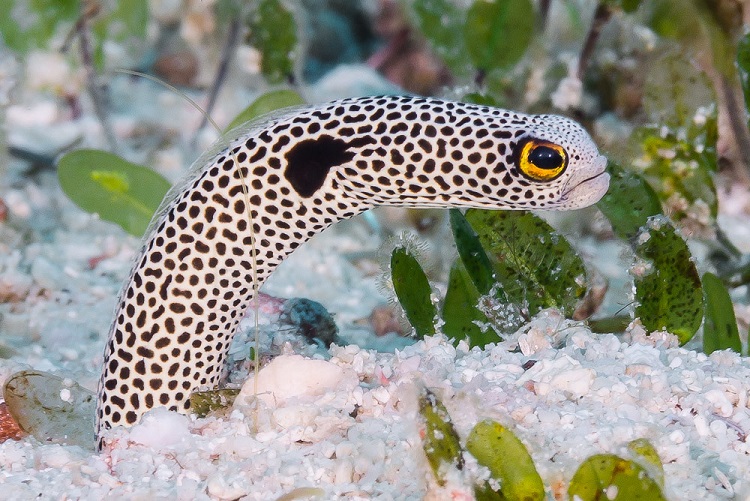
Some eels have been culturally important species since the Normans invaded England in 1066. Eels appear on numerous coats of arms and even along the border of the Bayeux Tapestry, where they’re believed to represent King Harold’s slippery hold on the crown.
Eels were also used as currency, with more people in rural England paying rent in eels than in any other form!
Some historians say, “Medieval England had an eel culture in the same way we think of England having a tea culture!”
Commercial Eel Species
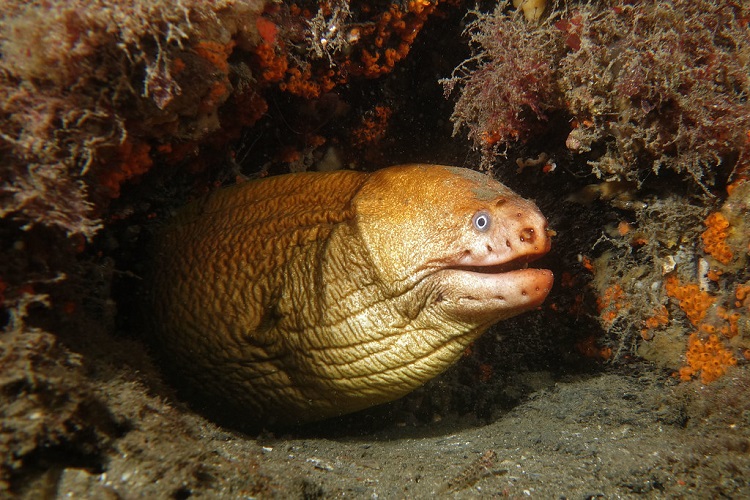
There may be 800 different species of eels, but only three are considered important commercially.
The American eel, European eel, and Japanese eel dominate the commercial markets and are the focus of aquaculture and eel farming operations around the world.
Although around 95% of the eels consumed globally come from farms, they aren’t raised in captivity from the beginning. Instead, the aquaculture industry pulls young glass eels from the wild and raises them until they’re commercially viable.
What Are the Human Uses for Eels?
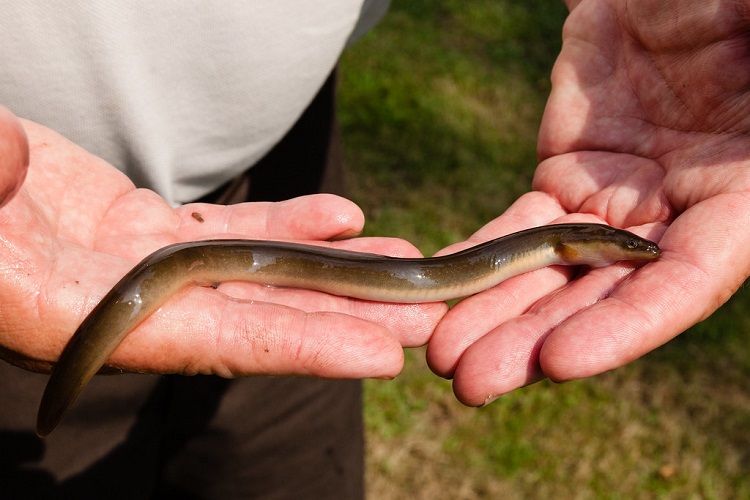
There aren’t that many uses for eels asides from eating them, which is apparently a very gratifying and mouthwatering experience but not one I’m tempted to try. The idea of tucking into a slithery mucous-covered eel is enough to turn my stomach!
Eels are very popular in both Japanese and Chinese cuisine and have been a mainstay of traditional meals in London for hundreds of years, although their popularity is now declining.
Is the Sustainable Consumption of Eels Possible?
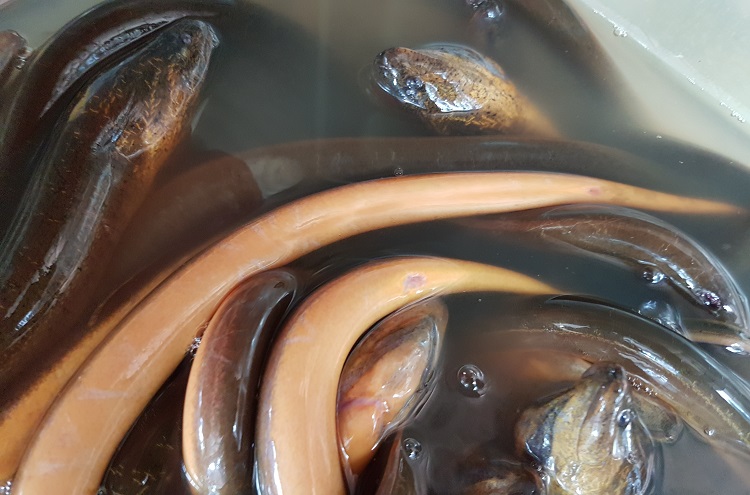
Sustainable eel farming doesn’t exist yet, says Monterey Bay Aquarium Seafood Watch. No one has found a way to produce eels commercially, so the current industry relies on pulling glass eels out of their natural habitats and raising them on farms.
Captive breeding may become viable in the future, but first, we must figure out how to keep the larvae alive and induce eel gonad development.
For some reason, eels don’t develop their reproductive organs naturally in captivity, although scientists are working on hormone injections that they think will induce gonad development in injected eels.
Threats to the Eel’s Survival
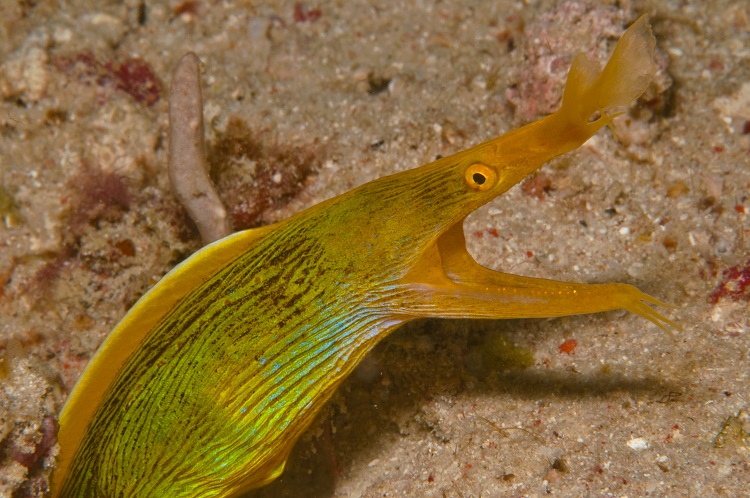
Adult eels survive a 6,500 km migration, but they’re struggling to keep their heads above water (so to speak) in the current climate. Plastic accumulating in the Sargasso Sea is stopping eels from the spawning season, while ocean warming is pushing them beyond their natural habitat.
Dams also block traditional eel migration routes while eel fishing continues to deplete an already decreasing population.
What Is the Conservation Status of the Eel?
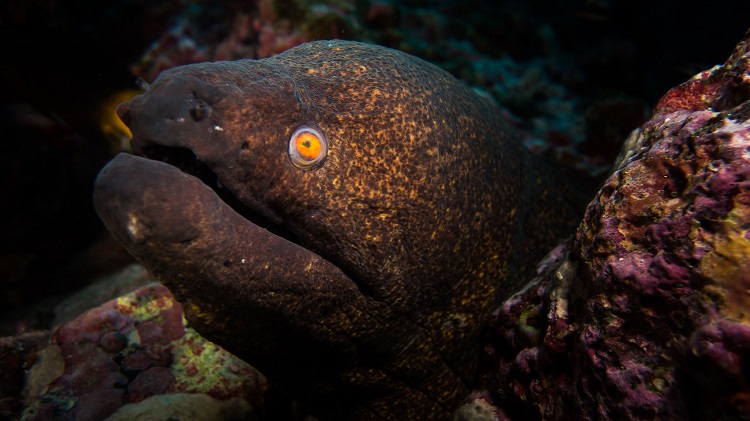
If you had to be an eel, you’d be better off being a marine eel than a freshwater one, simply because your chances of survival would be that much higher. The European eel is critically endangered, with some saying its population is currently around 1% of former levels.
The situation isn’t much better for the American or Japanese eel, both of which are endangered and declining rapidly.
What Conservation Efforts Are Being Used to Protect Eels?
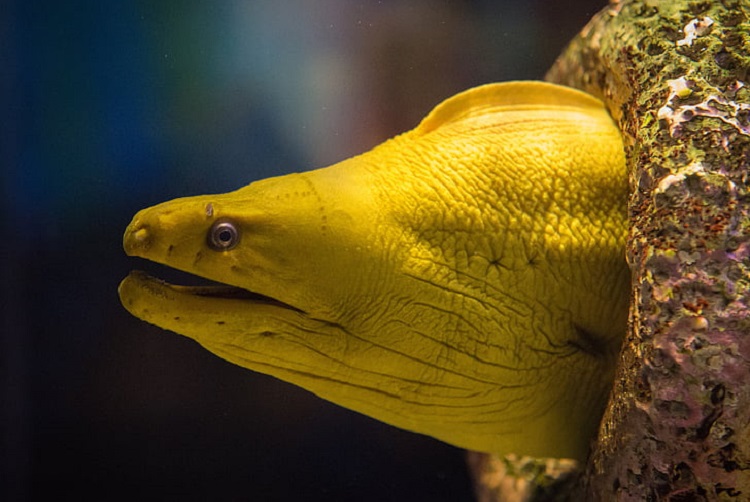
The European Union mandated that all member countries would need to develop European eel recovery plans in 2007, hoping these efforts would help more adult eels successfully migrate to the sea and see glass eel stocks recover.
It took another 13 years before the IUCN placed the European eel on its critically endangered list. Conservation efforts continue to struggle, largely because the European eel isn’t half as cuddly as a giant panda!
Other species have been even less fortunate. The American eel enjoys no federal protection at all, despite being endangered, and the Japanese eel fares a little better. However, the Japanese Fisheries Agency does require eel farmers to be licensed.
FAQs
Where Do Eels Live?
Most eels live in marine habitats, including coastal areas, coral reefs, and deeper water off the continental shelves. Some species are more adventurous, however, trekking their way up rivers and maturing in lakes and other freshwater systems.
Is the Eel a Fish?
I know eels look like worms or snakes, but they’re not. They may not have fins like most other fish, but the scientists reckon there’s something decidedly fishy about them and plopped them into the same fishy family as lionfish and catfish, among many others.
Is It Safe to Eat Eel?
My husband cooked and ate the eel he caught in Australia and lived to tell the tale. Eel is a popular dish in several countries, so it obviously is safe to eat if prepared properly.
Eating it raw is out of the question. Eels have poisonous blood that contains a toxic protein that could cause your muscles (and your heart) to cramp, potentially causing a heart attack!
Do Eels Bite?
Eels are predatory carnivores with sharp teeth that can deliver a nasty bite. Moray eels are the most dangerous because they have backward-facing teeth that hook into the skin, ripping it and causing extensive bleeding.
How Many Species of Eels Are There?
Until 2022, there were 800 species of eels in the world, and then scientists discovered another. The Ariosoma indicum belongs to the Congrid eels group and lives on the Indian coast close to Kerala and West Bengal.
What Color Is an Eel?
Freshwater eels change shape and color as they mature. Eels transform from a transparent glass into yellow eels and then, in their final phase, take on a silvery hue. Marine eels can be extremely colorful or completely black, depending on their habitat.
Conclusion
I think by now you can appreciate why eels are such a slippery subject. They travel vast distances, moving from marine to freshwater habitats, change shape and color, and only develop reproductive organs in their late 20s.
Species that take so long to mature are more susceptible to the threats of overfishing and, in the case of the eel, the harvesting of young glass eels. Their population struggles to recover after such setbacks, as the decreasing numbers of freshwater eels indicate.
Eels are still slippery, slithery things that I’d rather not come into contact with, but I now have much more respect for their complicated life cycle and their integral role in our freshwater ecosystems.
I hope you’ll join hands with eel scientists, conservationists, and eel advocates to try and save our existing eel species. You can start by skipping the eel sushi and choosing something a little more sustainable off the menu.


